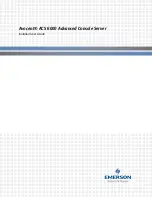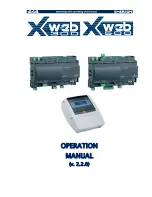
Installation Manual August, 2011
11-1
Chapter 11 – SIP Trunk Configuration
INTRODUCTION
Session Initiation Protocol (SIP) is an application layer protocol used for
establishing sessions in an IP network. SIP trunks allow the IP
edge
system to get PRI-like services from an Internet Telephony Service
Provider using SIP.
A SIP trunk allows an IP
edge
system to connect internal voice and private
data traffic to the outside public network (PSTN and public data) via IP.
When a user dials a call that will be sent over the PSTN, the call routing is
sent over the WAN to the Internet Telephony Service Provider (ITSP) that
is providing the SIP trunk. This ITSP will provide a connection to the
PSTN through their equipment. The call will be sent from the IP
edge
system to the SIP provider, who will act as a proxy, and send the call to
the dialed destination.
For incoming calls, the SIP trunk acts somewhat like a DID trunk, the
dialed number is sent to the SIP provider and then routed over the IP
Network to the IP
edge
system. This routing is based on the URI and
associated IP address.
Toshiba’s SIP Trunk capabilities allow the IP
edge
system to communicate
with a service provider natively over an IP circuit, which can be used to
carry voice and data simultaneously. Inside the IP
edge
system, voice is
converted to data and sent to the service provider along the same circuit
as the other data packets. This allows one circuit to be used for voice and
data, it also allows data to use all of the bandwidth when no voice is
present. Quality of Service (QoS) is managed by the service provider,
allowing voice to instantaneously take priority over data.
SIP trunks offer ISDN-like features over a data connection (i.e. a T1
circuit). However, unlike a traditional T1 circuit, a SIP trunk enabled circuit
does not have to be physically provisioned and divided to separate the
voice channels from the data channels.
REQUIREMENTS
•
Contact the Toshiba Sales Applications Desk for the latest SIP Trunk
Service provider list.
•
License: I-CP-TRUNK
Summary of Contents for IP edge EC
Page 1: ...TOSHIBA Telecommunication Systems Division Installation Manual Title Page August 2011 ...
Page 18: ...This page is intentionally left blank ...
Page 32: ...This page is intentionally left blank ...
Page 78: ...This page is intentionally left blank ...
Page 82: ...This page is intentionally left blank ...
Page 92: ...This page is intentionally left blank ...
Page 96: ...This page is intentionally left blank ...
Page 100: ...This page is intentionally left blank ...
Page 144: ...This page is intentionally left blank ...
Page 205: ...THIS IS THE END OF THE DOCUMENT ...
Page 206: ......
















































